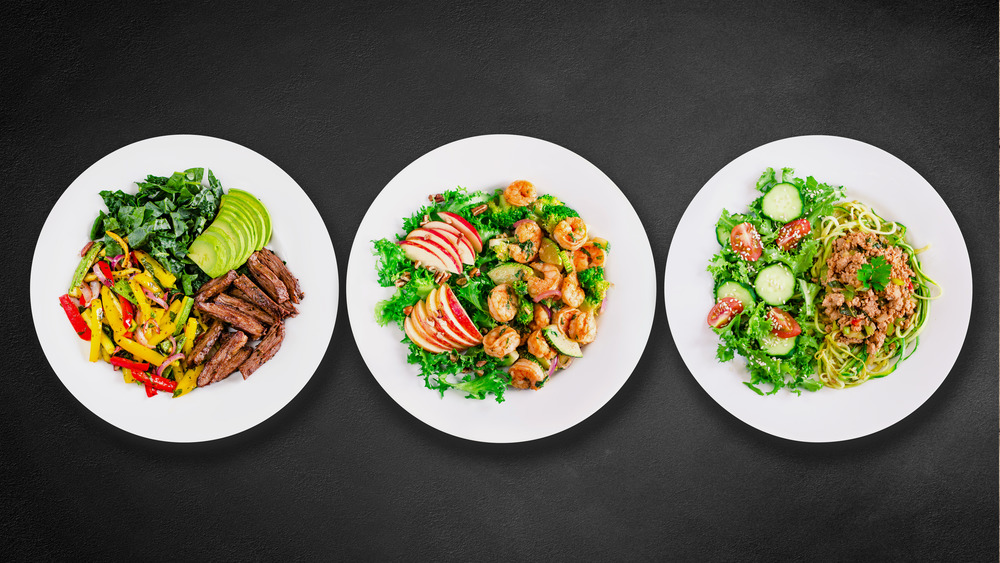The Real Difference Between The Macro Diet And The Keto Diet
You may have been hearing about the macro diet or the keto diet lately, and found the differences between the two confusing. If you've struggled to choose between the many different diet options available, you're not alone: For every diet championing a high-fat approach, there's another claiming that high-protein or high-carbohydrate is the way to go. The keto diet — also known as the ketogenic or high-fat diet — is one of the most popular options right now. But the macro diet — counting macronutrients — is gaining popularity as a more relaxed approach to diet.
Both diets are based on macronutrient breakdown rather than counting calories. That means the total number of calories consumed isn't as important as the ratios of carbohydrates, protein, and fat that you eat whether you're following a keto or macro-based plan (via Women's Health).
While the macro diet can shift the breakdown of the three nutrients depending on your goals, activity levels, genetics, and personal preferences, the ketogenic diet has strict guidelines around what you can eat and what you can't. On a keto diet, your macro breakdown will be 70 to 80 percent fat-based, with a small amount of protein and even smaller amount of carbohydrate — generally under 50 grams (200 calories) per day of carbohydrates, according to Healthline. The aim of the keto diet is to move your body into ketosis, a fat-burning state where fat is used as the primary fuel source instead of glycogen from carbohydrates.
What does the macro diet require?
On a macro diet, on the other hand, you can choose your own ratio of nutrients, though typically the breakdown will be 45 to 65 percent carbohydrate, 10 to 35 percent protein, and 20 to 35 percent fat, according to Women's Health. This breakdown is more in line with the current recommendations for Americans around macronutrient needs, and allows more personalizing. Unlike the keto diet, a macro diet is more flexible, which means you can shift your macro profile depending on your current needs, and tweak it to find what works best for you. For instance, if you're an athlete training hard, your carbohydrate needs may be greater, especially around exercise (via USADA). Alternatively, a macro diet can closely resemble a keto diet if you opt to focus on fat and lower your ratios of carbohydrate and protein.
Whether you're trying the macro or keto diet, you'll need to keep track of your food and its macronutrient breakdown in order to see if you're staying on track. Apps like MyFitnessPal, My Plate, and Lose It are good options for tracking calories as well as how much energy you're getting from carbohydrates, protein, and fat.


